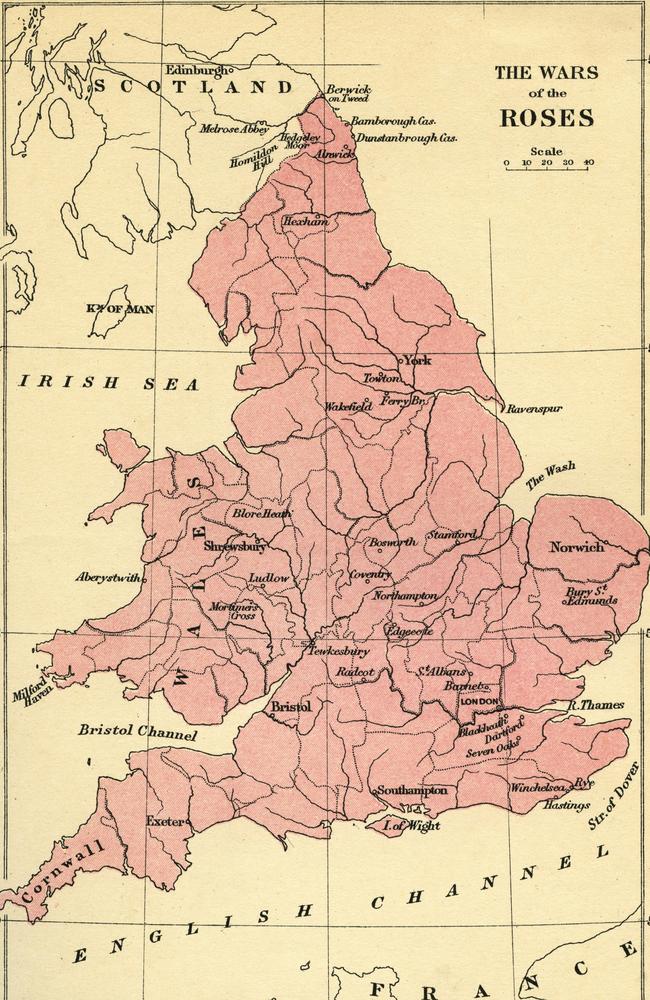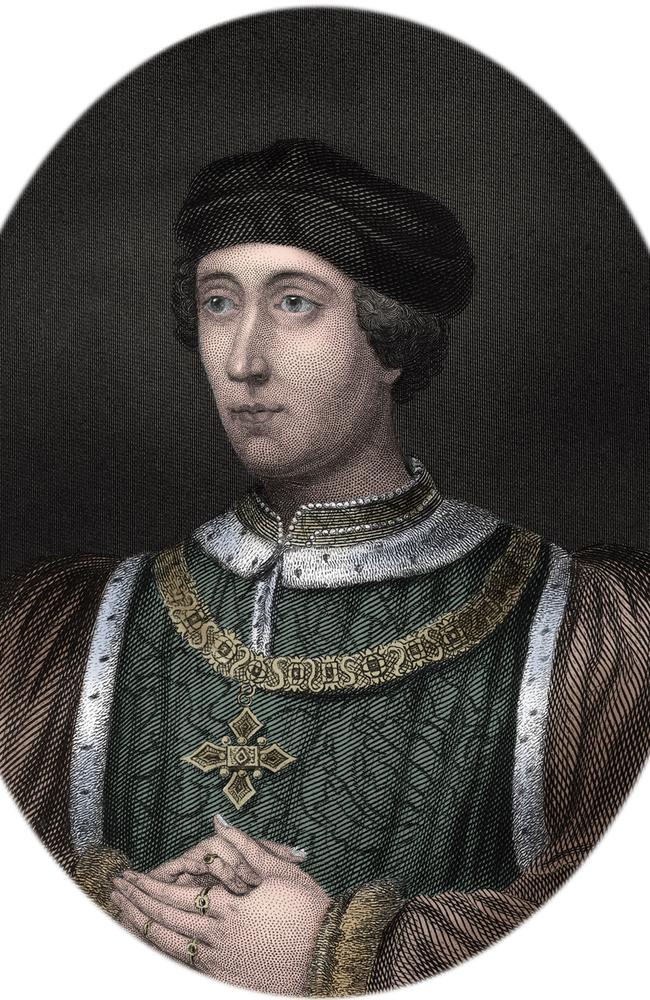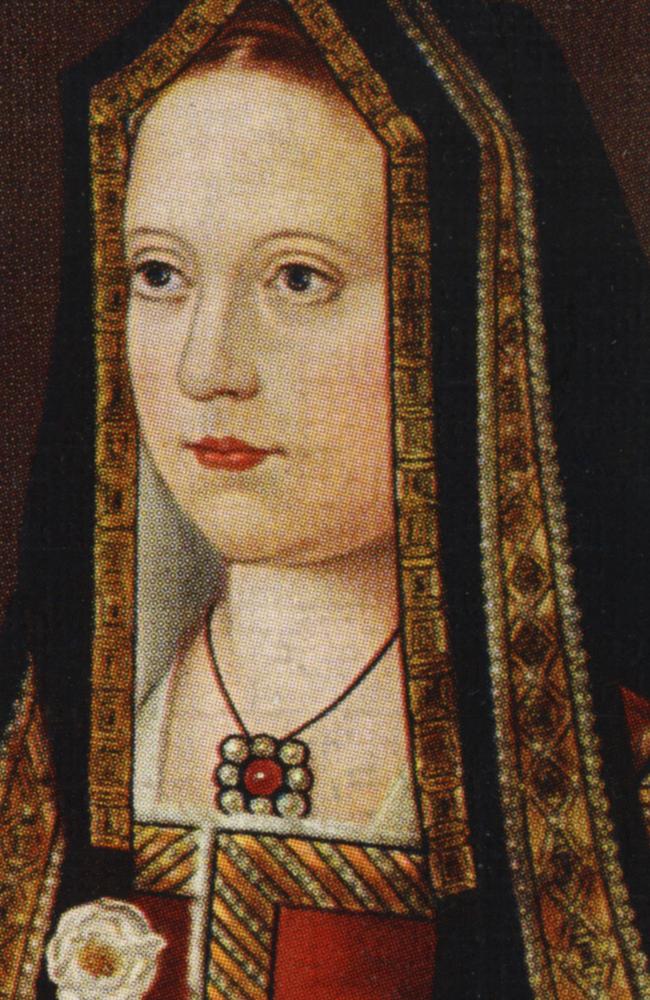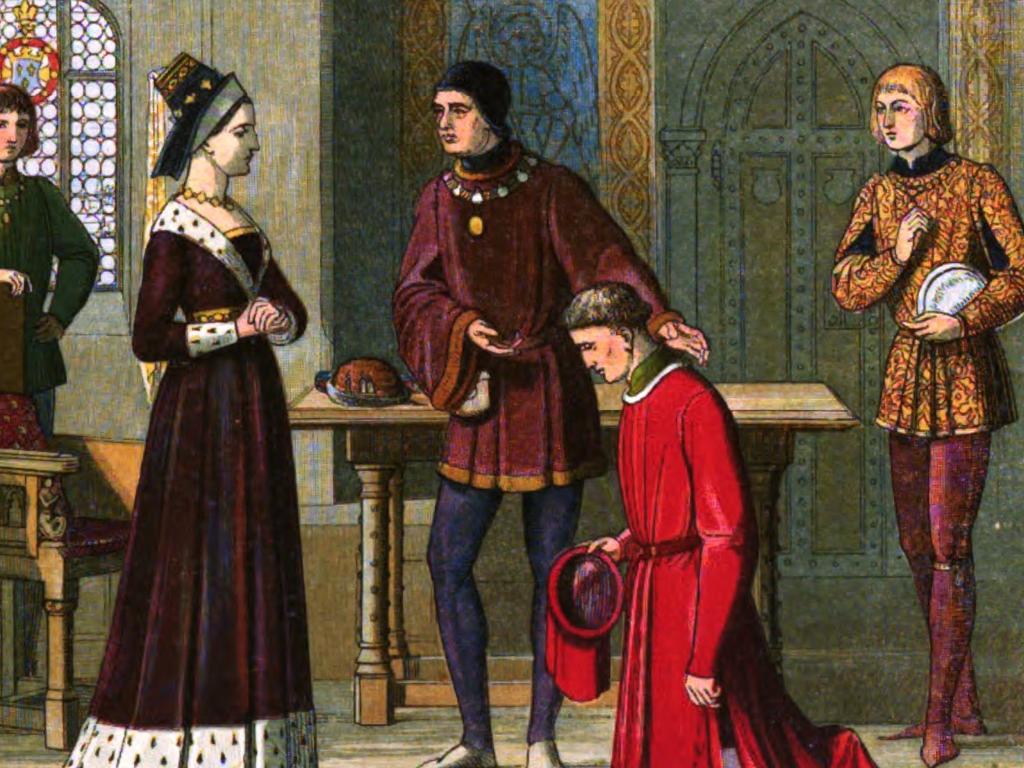The brutal true story of England’s real-life Game of Thrones
It was one of the darkest days in British history, when 50,000 men lost their lives in just 10 hours in some of the most brutal combat ever seen.

Britain’s brutal civil war was waged across 30 years in medieval times, with two families battling for the throne.
The House of York and the House of Lancaster were two royal families determined to rule the country; the white rose was featured on the badge of the Yorks, while the Lancastrians’ badge featured the red rose — although historians say neither side used a rose symbol as their only means of identification and the name “Wars of the Roses” wasn’t used until the 19th Century.
To make matters intensely complex, the two families were actually descended from the same family, the royal Plantagenet family.
What began as a civil war between the families in 1455 continued until 1487 — a total of 17 battles, with each side claiming a right to the throne. The wars meant Britain had five different rulers over 25 years, three being murdered or executed.
Game of Thrones George RR Martin has said ‘A Fire of Wind and Ice’, draws closely to the Wars of the Roses mostly due to the sheer brutality of the battle scenes.
It was 558 years ago this month that the bloodiest battle of all was fought — the infamous Towton battle — where 50,000 men were slaughtered and a nearby river was said to be red with blood.

RELATED: Awful disfigurement of Queen Elizabeth
RELATED: Queen’s gruesome, botched death
RELATED: Wild life of sword fighting bisexual
THE BEGINNING
The Yorks and Lancasters shared ancestors dating back to the sons of Edward III of the House of Plantagenet, England’s king from 1327 until 1377. This common lineage meant that both had a legitimate right to the throne — although many historians believe the Yorkists’ claim was stronger.
The Lancasters were related to Edward’s third son, John of Gaunt. At the time the Wars of the Roses first began in 1455, the Lancasters had been on the throne since 1399, when Henry IV took over from his cousin Richard II.
HENRY VI
Henry VI became King of England in 1422 when he was nine months old and later became the disputed King of France. He married Margaret of Anjou in 1445, a noble Frenchwoman whose was more politically savvy than her husband. That wouldn’t be too difficult as King Henry wasn’t terribly interested in politics at all.
Due to his reputation as a weak ruler, this paved the way for more ambitious noblemen to plot against him.
His disinterest in the throne led to him losing any semblance of power in France and, due to general mismanagement of his position in England, caused a widespread revolt in 1450. The revolt, held by peasants as well as property owners, saw thousands of people marching to London to present the King with a list of concerns. This list was known was ‘Complaint of the Poor Commons of Kent’.

JACK CADE AND THE REVOLT
The revolt was led by Jack Cade who demanded that King Henry bring Richard, Duke of York (a great grandson of King Edward III) back to England from Ireland, as he had a strong claim to the throne. At this stage the King showed enough interest in politics to end Cade’s rebellion. (Cade was arrested and died from injuries sustained during his arrest.)
King Henry suspected the Richard of York was the backbone of the rebellion and this suspicion sparked the beginning of 30 years of bloody battles that involved three generations of Lancasters and Yorks.
KING HENRY VI AND MENTAL ILLNESS
In 1452, Richard Duke of York decided he’d get rid of Henry’s advisers, including Edmund Beaufort, Duke of Somerset. He raised an army and marched on London declaring loyalty to Henry while also urging for him to remove Somerset from his post.
But Somerset held onto his role until Henry’s mental illness wore him down and he became catatonic. During Henry’s illness in 1453, Richard was made protector of the realm.
It didn’t take long for Richard to send Somerset to the Tower of London. But, for Richard the timing wasn’t great as Queen Margaret had just given birth to Henry’s only son, Edward of Lancaster. The birth of Edward meant Richard’s claim to the throne had been severely watered down.
When the king recovered from one of his ‘spells’, Richard wasn’t happy about stepping aside. So began the plays and jockeying for power, leading to the first battle of St Albans.
THE BATTLES OF ST ALBANS AND BLORE HEATH
On May 22, 1455, Richard of York, along with Richard Neville, Earl of Warwick, led a march against Henry of St Albans. It was a brutal battle, with thousands rampaging through the streets. Henry survived the attack but was wounded, while Somerset was killed.
Henry was taken prisoner by the Yorks, making way for Richard to resume his previously temporary role as Lord Protector. Queen Margaret and her young son Edward were advised to go into exile, or else risk being killed in London.
Queen Margaret was arguably more suited to royalty and leadership than her husband. She was said to be an ambitious and intelligent woman, known as the Lancastrians most skilled strategist.

She wasted no time in exile and worked to help restore Henry to the thrones so young Henry would eventually take up his position as the rightful heir. (Due to his mental illness, Henry was never one of the key players in the Wars of the Roses.)
Realising that there were people plotting to get rid of him, Richard started to form any army, and on September 23, 1459, at Blore Heath in Stafforshire, they went head to head with Margaret’s army.
Even though they were outnumbered two to one, the Yorks easily won the battle.
THE BATTLES OF LUDFORD BRIDGE AND NORTHHAMPTON
The next major battle in the civil war was one that needed no weapons — it was known as a battle of courage. By mid-1459, Henry and Margaret had managed to assemble an enormous army, with numbers increasing, due to the inclusion of York deserters.
On October 12, 1459, Richard of York and his men, including Salisbury and Warwick went to Ludlow Bridge near Ludford, Shropshire, to take a stand against Henry and his troops. But a huge number of Yorks fled, apparently many refusing take part in this latest battle as word had spread Henry was appearing. Henry and the Duke of Buckingham, who led the royal army, offered to pardon any Yorks who changed sides. With that proclamation widely known, many Yorks defected, their leaders fled and Richard went back to Ireland.
But the battles continued in other ways; Richard had his ally Warwick enter London with thousands of men, advancing on Henry’s army in Northampton.
What Henry wasn’t aware of was that one of his close commanders was a ‘turncoat’ and let Warwick’s men into Henry’s camp. This saw the Yorks win the battle and capture King Henry; although Margaret and young Edward managed to escape.
THE BATTLE OF WAKEFIELD
Richard once again declared himself Henry’s successor and Henry was forced to abide by his wishes. But he managed to have an agreement drawn up, stating that he would remain on the throne until his death.
The British parliament passed Henry’s agreement, known as the ‘Act of Accord.’ But Queen Margaret refused to agree to this and orchestrated another battle, raising a new army to rise up against the Yorks.
This latest battle over succession, known as the Battle of Wakefield, saw an almighty clash between Richard’s forces and Margaret’s army. Richard was killed during the battle and his severed head was put on display for all to see.

BATTLE OF TOWTON
With Richard of York dead, his son Edward, Earl of March, carried on the battles against the Lancastrians. In winter, 1461, Edward’s York army crushed the Lancastrians at the Battle of Mortimer’s Cross. Then, two months later, the Yorks were beaten by the Lancastrians at the Second Battle of St Albans. The Lancastrian victory meant King Henry was rescued and reunited with Margaret.
But Edward didn’t stop and, on March 29, 1461, his forces faced the Lancastrian army in the middle of a snowstorm near Towton, North Yorkshire. This was the bloodiest one-day battle in British history, with more than 80,000 men involved in the brutal combat and an estimated 50,000 killed (although historical estimates vary).
The battle began with volleys of arrows before brutal hand-to-hand fighting that dragged on for 10 horrendous hours. Legend says that a nearby river was flowing red with blood.
The Yorkists were eventually victorious, allowing Edward IV to return to the throne and forcing Henry, Margaret and their son Edward to flee to Scotland.
MORE CHANGES
But Margaret was not going to give up so easily. She kept working behind the scenes to make sure Henry was back on the throne. She reached out to her compatriots in France for help and managed to orchestrate a 1470 invasion of England, restoring Henry to the throne before the end of that year.
Edward IV went into hiding but worked to muster an army, leading to battles known as the Battle of Barnett and the Battle of Tewksbury.
Henry and Margaret’s son Edward was killed in the Battle of Tewksbury and, as they were thrown into the Tower of London, England’s throne was once again given back to Edward IV.
A year later, Henry died and while there is no official cause of death, some historians believe Edward IV had him killed while he was in captivity. Margaret was released and spent the rest of her life in France, dying in 1482.
Interesting note about Margaret: While she was said to be incredibly brilliant, she also had a reputation for being brutal and ruthless. A woman who showed no mercy to her enemies, Margaret once allowed seven-year-old Edward to choose the method of execution for two Yorkists. When the boy said, “Take off their heads,” Margaret did exactly as her boy wished.
LJ Charleston is a freelance journalist. Continue the conversation @LJCharleston



